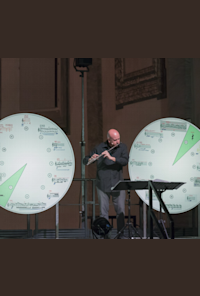

Kathinkas Gesang Als Luzifers Requiem
Podziel się
Ravenna Festival (2019)Informacje z organizacji artystycznej (zweryfikowane przez Operabase)
13 czerwca 2019 (1 spektakli)
Odwiedź stronę internetowąKathinkas Gesang Als Luzifers Requiem by Xenakis, Scelsi, Stockhausen, od (2019/2019), Dyrygent Antonio Caggiano, San Giacomo Apostolo(Chiesa Di San Giacomo), Forlì, Włochy
Wybierz opcję PracaPsappha, Xenakis
Producent
Dyrygent
Ensemble
Orkiestra
CPChigiana Percussion Ensemble
Dowiedz się więcej o kompozytorze
Dowiedz się więcej o pracy muzycznej
